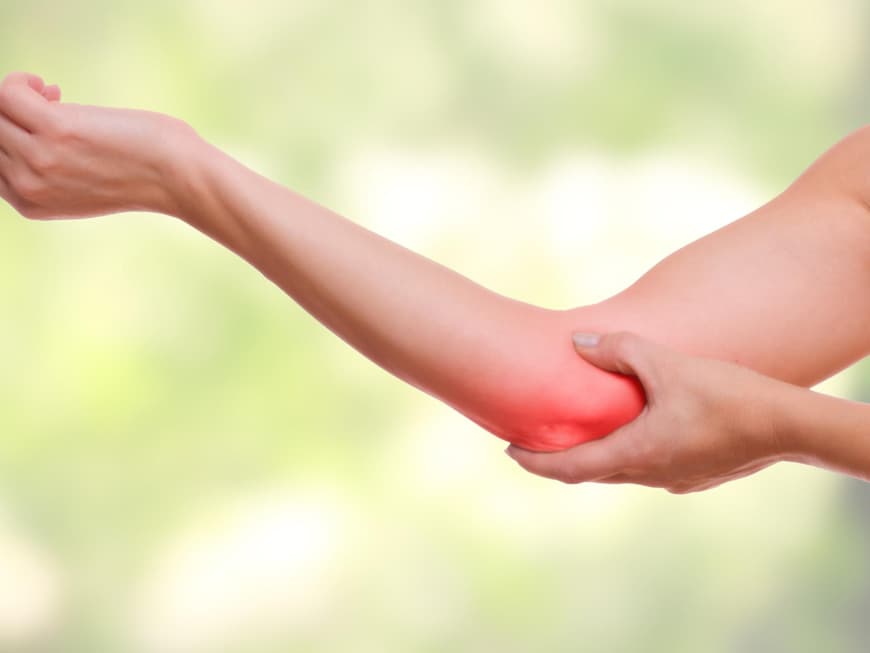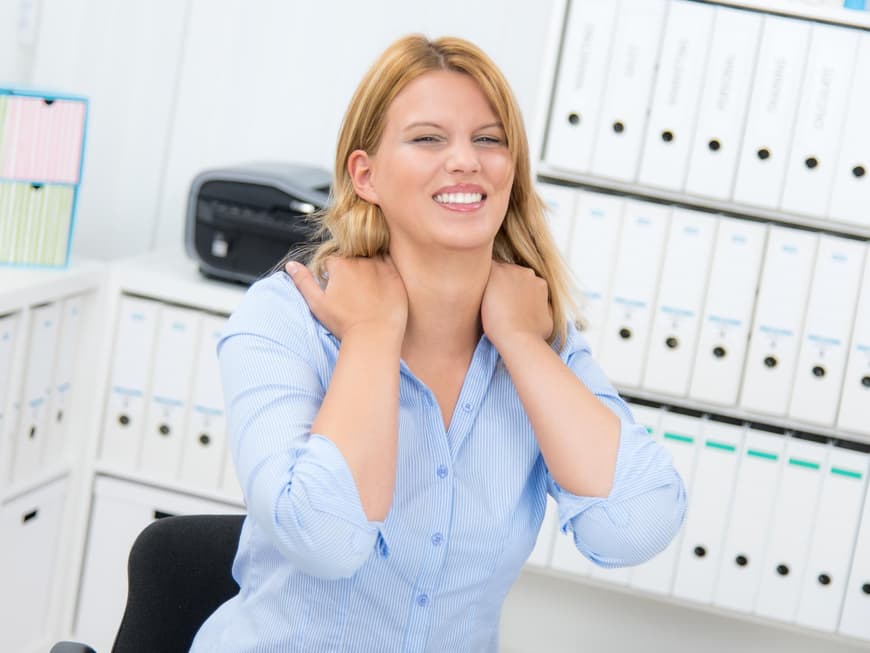The bad news first: it can affect anyone. Every second German over the age of 35 has osteoarthritis - and from the age of 60, almost everyone is affected. Our healthy joints function like hinges and allow us to move. But just as hinges can rust, joints also wear out. With increasing age, the body is often less and less able to compensate for the wear and tear of cartilage tissue.
Due to the daily stresses and strains, the cartilage mass in the joint spaces decreases more and more until finally the bones rub directly against each other with every movement and painful inflammation occurs. Heavily stressed joints such as knees, hips and ankles are particularly frequently affected. If the wear and tear goes beyond the normal level, doctors speak of osteoarthritis. And now comes the good news: you can do something to strengthen your joints.
Osteoarthritis in the final stages: constant pain
In the early stages, osteoarthritis often initially manifests itself as discomfort when standing up, pain when starting to walk or an uncomfortable feeling when sitting. As it progresses, the joints become increasingly immobile and stiff until movement is only possible with pain. In the final stage, the pain also occurs at rest, especially at night. Other components of the joints such as bones, tendons and ligaments can change.
Strong muscles can strengthen joints
If you have joint pain, the obvious thing to do at first is to rest the aching joints and immobilize them. But this is wrong. Exercise is important: both to treat joint pain and to strengthen the joints. Exercise strengthens the muscles, improves posture and at the same time increases the mobility of the individual joints. Only strong muscles can effectively stabilize the damaged apparatus and thus slow down the progression of the disease. Exercise also supplies the joints with important nutrients and waste products from the metabolism can be removed. Doctors recommend aqua gymnastics, swimming, walking or cycling to strengthen the affected joints and avoid putting additional strain on them.
Freedom from pain is the goal of treatment
In the treatment of osteoarthritis, the patient should be free of pain with normal weight-bearing and be able to lead as active a life as possible. Traditional painkillers are used for joint inflammation, but these have side effects if taken over a long period of time. Experts therefore often recommend other treatment methods.
The most important joints
Shoulder: The shoulder joint is extremely flexible. The joint head is not fixed in the socket, but is held in position by muscles, tendons and ligaments.
Elbow: The joint is formed by three bones: The humerus, ulna and radius. It is surrounded only by a joint capsule and is not very mobile.
Knee: The knee is highly mobile and stable, as it is designed to support all types of locomotion. The knee joint has to absorb shocks and bear loads in every situation
Alternatives to painkillers: Enzyme therapy
Studies have shown that inflammation-related osteoarthritis pain can be reduced just as effectively with enzyme combination preparations as with painkillers. However, the enzymes are much better tolerated and are therefore suitable for long-term use. The combination preparations (e.g. Wobenzym plus, pharmacy) do not suppress the inflammation, but support the faster course of the inflammatory reaction and thus long-term healing. The blood circulation is stimulated, muscles and joints are
are supplied with oxygen and nutrients.
Strengthen joints: Do's & don'ts
Strengthen and relieve joints, avoid damage to cartilage - these tips will help:
DO Sit correctly: A wedge cushion relieves pressure on the hips and knees. The legs should ideally be positioned at a 90-degree angle under the chair and stretched out from time to time.
DO Good shoes: High heels may look pretty, but they are bad for your joints. Flatter heels are better, but the soles should be flexible. Insoles also relieve pressure on the ankles.
DO Climb stairs carefully: Up the stairs, the healthy knee goes first, down the stairs the painful one. This prevents overloading.
DO Carrying aid: It is best to always use trolleys when shopping - carrying heavy items puts a lot of strain on the joints.
DO See a doctor: If your joints hurt, you should see a doctor as soon as possible.
DON'T Overload: Stop-and-go movements in sports such as tennis or squash should be avoided as they put unnecessary strain on the joints.
DON'T Overweight: Every kilo too much puts pressure on the joints. Normal body weight, on the other hand, keeps you fit and flexible.
DON'T stand: Standing for long periods of time tires the muscles. When the tension in the supporting muscles decreases, joints, ligaments and intervertebral discs take over this task. But that's not what they're made for. Better: sit down from time to time and walk around a few steps.
DON'T use your smartphone: Studies show that typing on your smartphone puts a lot of strain on your shoulders and neck. In between: Roll your shoulder.


